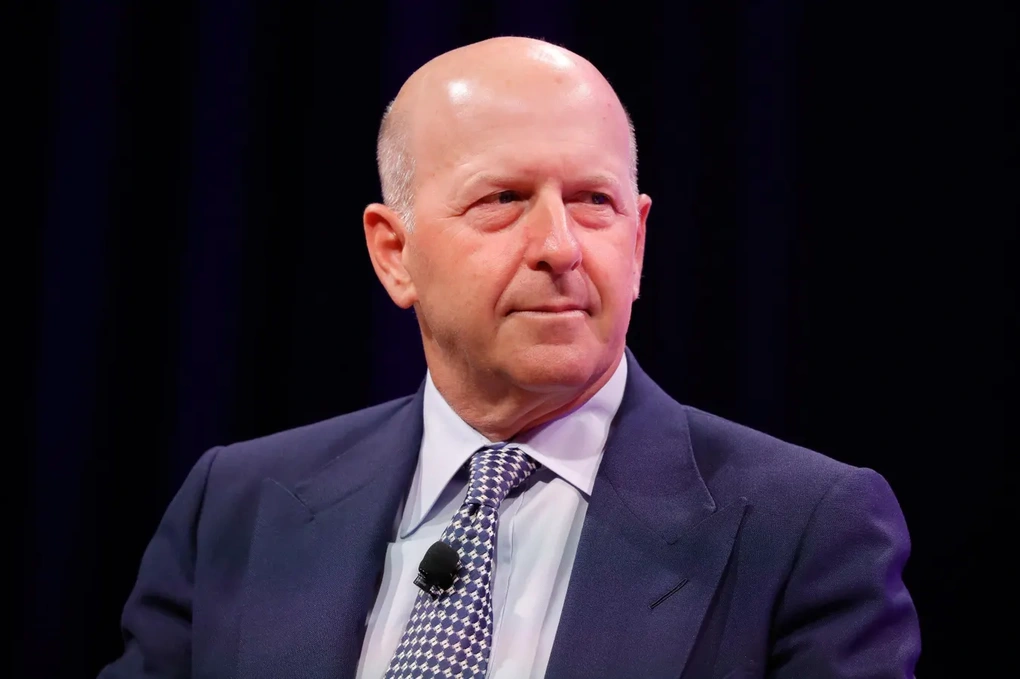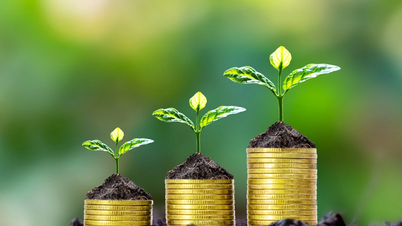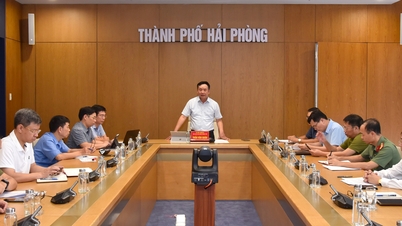At Italian Tech Week, as global stock markets continued to break records thanks to the AI wave, many were waiting for triumphant announcements. But David Solomon, CEO of Goldman Sachs – one of the world’s most powerful financial institutions – chose an unusual opening: “I sleep very well. I don’t spend every night worrying about what’s going to happen next.”
That seemingly light-hearted remark quickly spread, because while Wall Street was awash with excitement, Solomon calmly spoke of an approaching correction cycle.
His calmness comes not from blind optimism, but from an ability to read market cycles. In his speech, Solomon sketched a picture of the next 1-2 years that is both optimistic and realistic, wrapped in four big predictions.

As the S&P 500 and Nasdaq indexes have broken more than 30 records this year alone, David Solomon, CEO of Goldman Sachs, has made four major predictions, outlining a picture of the world economy in the next few years (Photo: Getty).
The stock market party is about to cool down
After nearly three years of near-unstoppable growth, the S&P 500 and Nasdaq have set more than 30 new records this year alone. Much of the energy comes from the wave of hype surrounding AI. But history tends to repeat itself, Solomon says.
“Whenever a revolutionary technology comes along and attracts huge capital, the market tends to run ahead of its true potential. I wouldn’t be surprised if in the next 12-24 months, stocks correct and that’s normal.”
He avoided using the word bubble, but the implication was clear: investors were so excited that they were complacent about risks. “When people are excited, they only see opportunities and forget to be cautious. Sooner or later there will be a crash,” he said.
This prediction is especially notable because it comes at a time when the market is at its peak. Goldman Sachs has even estimated that there is a more than 20% chance of a correction in the S&P 500 within the next 12 months. When this downturn occurs, Solomon says bluntly: "When that happens, nobody feels good."
Here's the first and most important warning: every party must come to an end, and the smart investor is the one who is prepared for that moment.
AI - The fierce screening between winners and losers
The coming correction is the real test of the “AI craze,” Solomon said, recalling the lessons of the dotcom bubble of the late 1990s: thousands of internet companies sprang up, billions of dollars poured in, but only a few, like Amazon, survived the bubble burst.
“When this cycle ends, there will be big winners and a lot of losers,” Solomon said. “A lot of capital will be profitable, and a lot of capital will never be profitable.”
The coming cull will determine who is truly creating value and has a viable business model, and who is simply riding the wave. “Many companies will disappear, and a new Amazon may emerge,” Solomon concludes.
The message for investors is clear: don't follow the crowd, but start looking for businesses with real foundations - the "Amazons of the future" amid the speculative whirlwind.
US Economy - The Resilient Machine Behind Wall Street
In contrast to his caution with financial markets, Solomon is optimistic about the US economy. He believes the world's largest economic engine is still running smoothly and could accelerate in 2026.
This optimism is based on tangible drivers, including:
Fiscal stimulus packages: Government spending continues to be an important driver.
Infrastructure spending: Large scale infrastructure projects are being implemented, creating jobs and boosting related industries.
Large capital investments: Businesses are still investing heavily in technology and manufacturing.
Solomon said these dynamics are strong enough to offset some of the impact of the new tariffs. He forecasts US GDP growth to remain around 2% a year, which is lower than the historical average but “reflects a healthy and sustainable economy.”
Solomon’s optimism isn’t blind, however. He points to two variables to watch closely: the labor market (which has shown signs of weakness recently) and inflation (whether it will flare up again due to the impact of tariffs).
This forecast offers an important insight: don’t confuse market fever with the health of the real economy. The economy can be resilient even when Wall Street “crashes.”
2026 - The year of M&A boom
As the market corrects and the AI frenzy cools, a new cycle will begin: a mergers and acquisitions (M&A) boom. Solomon says 2026 could be a big “harvesting season” for opportunistic corporations.
He gave a very clear reason:
More reasonable valuations: After a correction, the valuations of many companies, especially in the technology sector, will return to more attractive levels, creating conditions for big players to take over.
The Need to Compete: CEOs and boards recognize the need to scale, acquire technology, and talent to survive and lead in a more competitive environment.
More open legal environment: Solomon believes the legal environment will become more favorable for large deals.
Goldman Sachs’ own figures back up this prediction. The total value of global M&A deals in 2025 increased by 29% year-on-year, and the bank predicts that the figure will continue to increase by another 15% next year, before really booming in 2026.
Source: https://dantri.com.vn/kinh-doanh/ceo-goldman-sachs-canh-bao-bua-tiec-chung-khoan-sap-tan-20251004143423541.htm



![[Photo] Solemn opening of the 8th Congress of the Central Public Security Party Committee, term 2025-2030](https://vphoto.vietnam.vn/thumb/1200x675/vietnam/resource/IMAGE/2025/10/4/f3b00fb779f44979809441a4dac5c7df)
![[Photo] Bustling Mid-Autumn Festival at the Museum of Ethnology](https://vphoto.vietnam.vn/thumb/1200x675/vietnam/resource/IMAGE/2025/10/4/da8d5927734d4ca58e3eced14bc435a3)

![[Photo] General Secretary To Lam attends the 8th Congress of the Central Public Security Party Committee](https://vphoto.vietnam.vn/thumb/1200x675/vietnam/resource/IMAGE/2025/10/4/79fadf490f674dc483794f2d955f6045)














































![[VIDEO] Summary of Petrovietnam's 50th Anniversary Ceremony](https://vphoto.vietnam.vn/thumb/402x226/vietnam/resource/IMAGE/2025/10/4/abe133bdb8114793a16d4fe3e5bd0f12)
![[VIDEO] GENERAL SECRETARY TO LAM AWARDS PETROVIETNAM 8 GOLDEN WORDS: "PIONEER - EXCELLENT - SUSTAINABLE - GLOBAL"](https://vphoto.vietnam.vn/thumb/402x226/vietnam/resource/IMAGE/2025/7/23/c2fdb48863e846cfa9fb8e6ea9cf44e7)






























Comment (0)